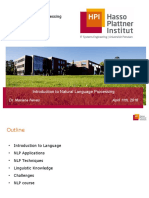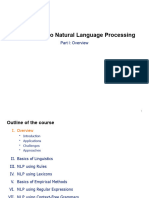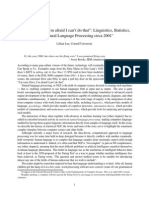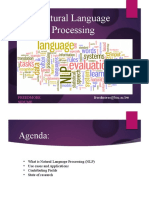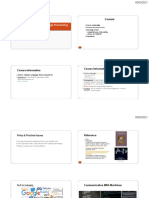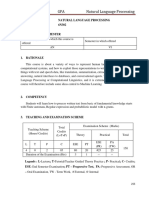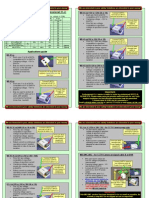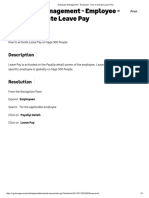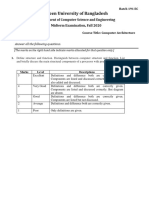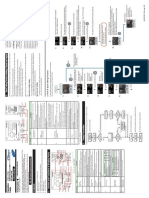0% found this document useful (0 votes)
51 views50 pagesNatural Language Challenges
The document discusses natural language challenges for conversational AI, including building blocks like automated speech recognition and natural language processing techniques for intent classification and slot mapping. It describes challenges like ambiguity, implicit context, and the dynamic and compositional nature of language that make natural language understanding difficult for AI systems. The document also provides an overview of NLP terminology and techniques like morphology, lexicography, syntax, and semantics.
Uploaded by
aivanovuCopyright
© © All Rights Reserved
We take content rights seriously. If you suspect this is your content, claim it here.
Available Formats
Download as PDF, TXT or read online on Scribd
0% found this document useful (0 votes)
51 views50 pagesNatural Language Challenges
The document discusses natural language challenges for conversational AI, including building blocks like automated speech recognition and natural language processing techniques for intent classification and slot mapping. It describes challenges like ambiguity, implicit context, and the dynamic and compositional nature of language that make natural language understanding difficult for AI systems. The document also provides an overview of NLP terminology and techniques like morphology, lexicography, syntax, and semantics.
Uploaded by
aivanovuCopyright
© © All Rights Reserved
We take content rights seriously. If you suspect this is your content, claim it here.
Available Formats
Download as PDF, TXT or read online on Scribd
/ 50






